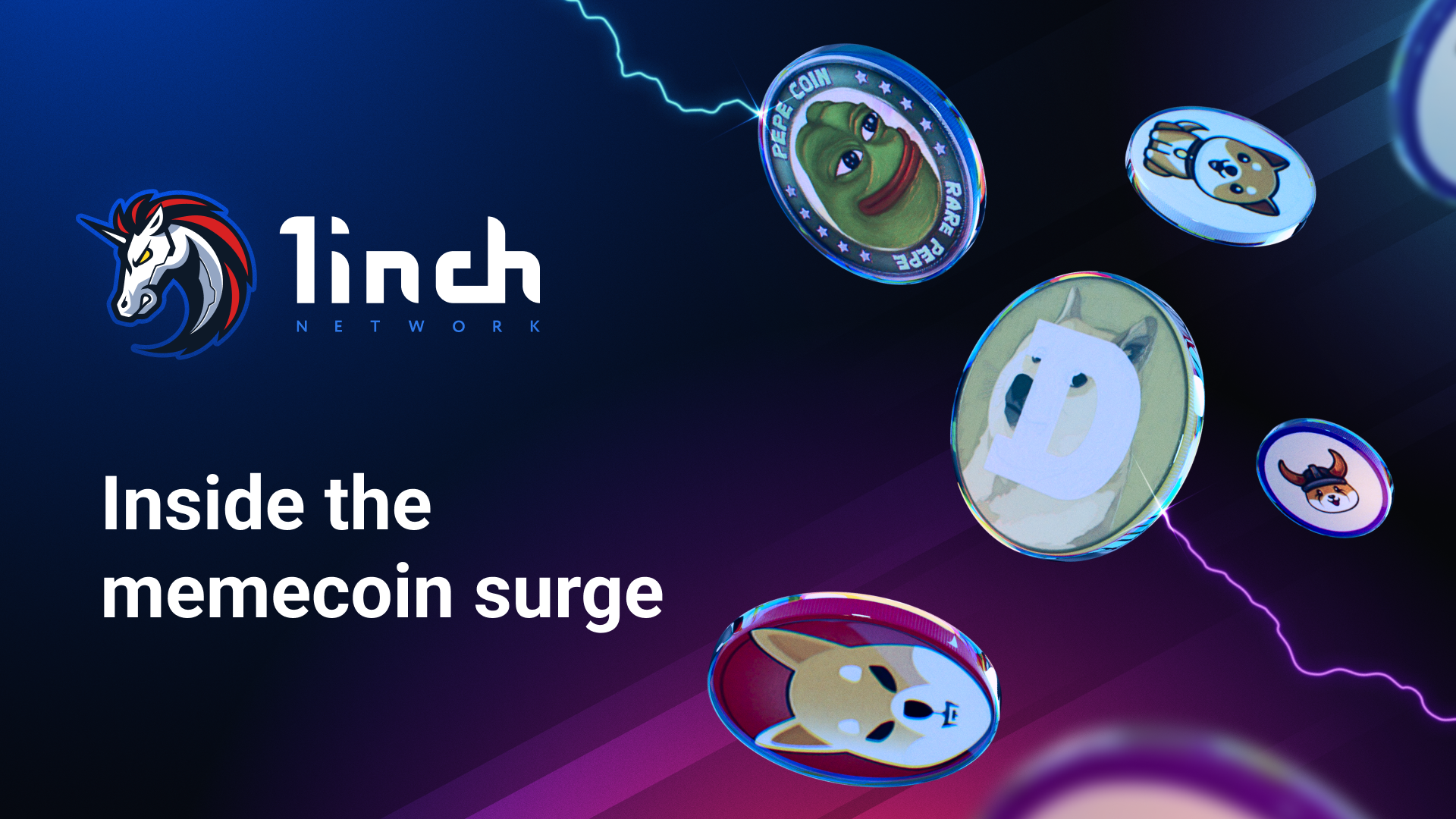Unveiling the memecoin phenomenon

Memecoins regularly capture the spotlight, often raising substantial interest from traders and investors.
Memecoins pay tribute to memes and cultural trends and emphasize virality, capitalizing on memes’ rapid spread and dynamic nature. According to Dune, trading volumes for these cryptocurrencies spiked in May again, reminding of a previous 2021 surge. The increase was primarily driven by a newcomer, PepeCoin (PEPE), which quickly gained significant interest and occupied a place among established memecoin pioneers like Shiba Inu (SHIB) and DogeCoin (DOGE). Its emergence marks yet another episode in the ongoing rise of memecoins, prompting interest in the reasons behind this phenomenon.
Main drivers of memecoins’ popularity
Social media influence and celebrity endorsements. Many memecoins, like DOGE or SHIB, gained considerable attention through discussions on social media platforms, such as Twitter, Reddit and Discord. Also, the backing of a celebrity can significantly fuel this exposure, like Elon Musk’s tweets and comments about DOGE leading to an instant increase in the coin’s value in 2021 – seven years after its launch. Even a mere mention can play a big role, as seen when McDonald’s responded to Musk’s tweet jokingly suggesting that his company should support a non-existent memecoin, Grimace Coin. The Twitter thread led to the immediate creation and trading of GRIMACE on exchanges.
Strong community support
Many memecoins foster virtual communities. Community members’ active involvement and promotion significantly contribute to these coins’ widespread popularity. This does not apply to all memecoins, but the most popular ones tend to have a strong community behind them.
High volatility and accessibility
Although volatility primarily presents a considerable risk factor, it also creates a potential for significant short-term profits. This factor attracts speculative traders and whales, alike. Plus, memecoins are typically low in price and widely available on exchanges. The combination of low price, affordability and volatility can cause events creating a buzz around memecoins. For instance, during the early stage of the PEPE token launch, a memecoin investor who swapped $250 worth of ETH for a massive 5.9 trn PEPE tokens turned into a millionaire at some point when the price of the token skyrocketed. However, high volatility means that investments can quickly lose their value with a sudden downturn. Additionally, some tokens may have low liquidity despite their rapid increase in appeal. In these cases, a swift gain on growth may prove to be only on paper, as the investor might find it challenging to sell their coins profitably.
Examples of memecoins and how they work
Memecoins can come with various sorts of backgrounds, traits and tokenomics.
For example, DOGE was originally a fork of a cryptocurrency called Luckycoin, which itself was a fork of Litecoin. Launched in 2013 as a joke by software engineers Billy Marcus and Jackson Palmer, it has remained one of the leading cryptocurrencies by far. Based on a Shiba Inu dog meme, DOGE experienced a significant market rise in 2014 and 2018 and then skyrocketed to a market cap of more than $80 bln in 2021, driven by Elon Musk’s support. According to Coingecko, DOGE currently has a market cap of $9.3 bln, a 90.89% drop from its all-time high.
Another leader among memecoins, SHIB, initially followed the branding of DOGE by taking on the same Shiba dog. SHIB also saw tremendous growth, reaching a market cap of $41 bln in October 2021. It has lost 91% from its all-time high. At the time of writing, its market cap is $5 bln, per data from Coinmarketcap.
The memecoin PEPE, which draws inspiration from the famous Pepe the Frog meme, recently became a sensation in the memecoin world, generating significant market attention. Within a month of its launch on April 15, 2023, it surpassed a market capitalization of $1 bln, securing a position among the top 100 cryptocurrencies. But it lost 88.99% from its all-time high in just 20 days.
Although all of these memecoins maintain high trading volumes, they differ in several aspects:
- DOGE operates on its own network, while SHIB and PEPE are ERC-20 tokens.
- DOGE does not have a maximum token supply, whereas PEPE and SHIB do (although SHIB's limit of one quadrillion can be considered almost infinite for a cryptocurrency).
- SHIB uses burning mechanism, while DOGE and PEPE don’t.
These distinctions contribute to the unique characteristics and functionalities of each memecoin. However, these memecoins do share a common characteristic of experiencing dramatic price swings. These volatile price movements can both attract and discourage investors in memecoins. As mentioned above, it is not uncommon for memecoins to lose around 90% of their all-time highs within a short period, and vice versa.
While popular memecoins continue to maintain decent trading volumes and community support, it's worth noting that many rapidly emerging memecoins quickly drop in value or disappear altogether.
In addition, memecoins are among fraudsters’ favorite tools: over ten cases of memecoin-related rug pulls were detected in May of this year alone, including on Bitcoin Pizza Day, which celebrates the first known BTC transaction for a physical good. Moreover, most memecoins initially present themselves only as entertainment coins and often lack a consistent roadmap. However, when they gain attention and increase in value, they can start to plan activities, such as staking or creating wallets. All these factors are essential to consider before dealing with memecoins, even popular ones.





























